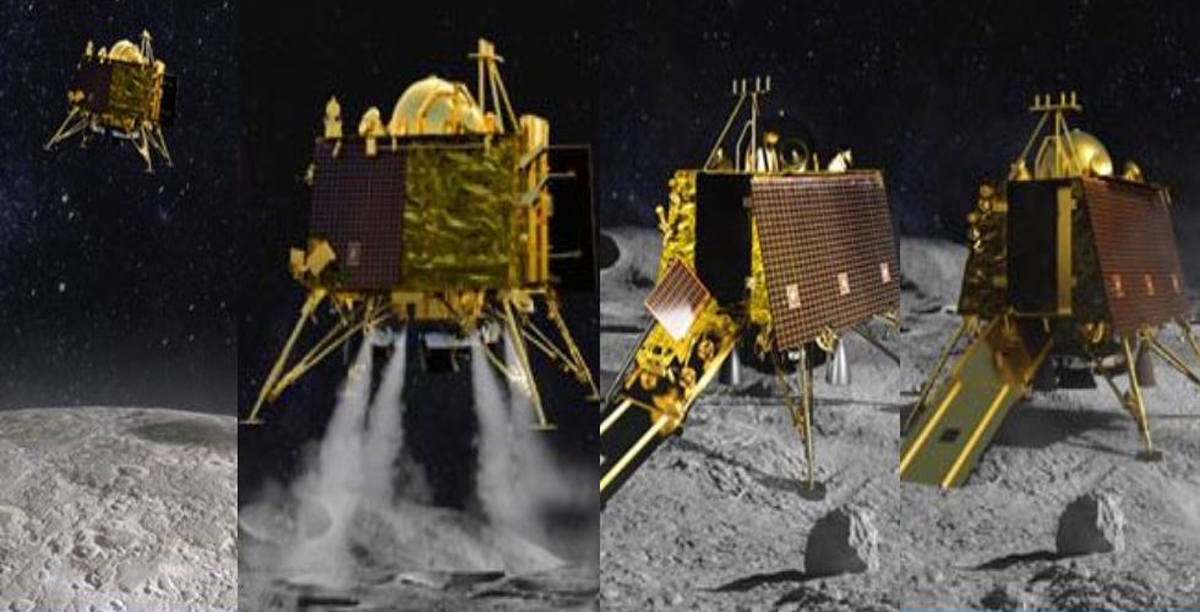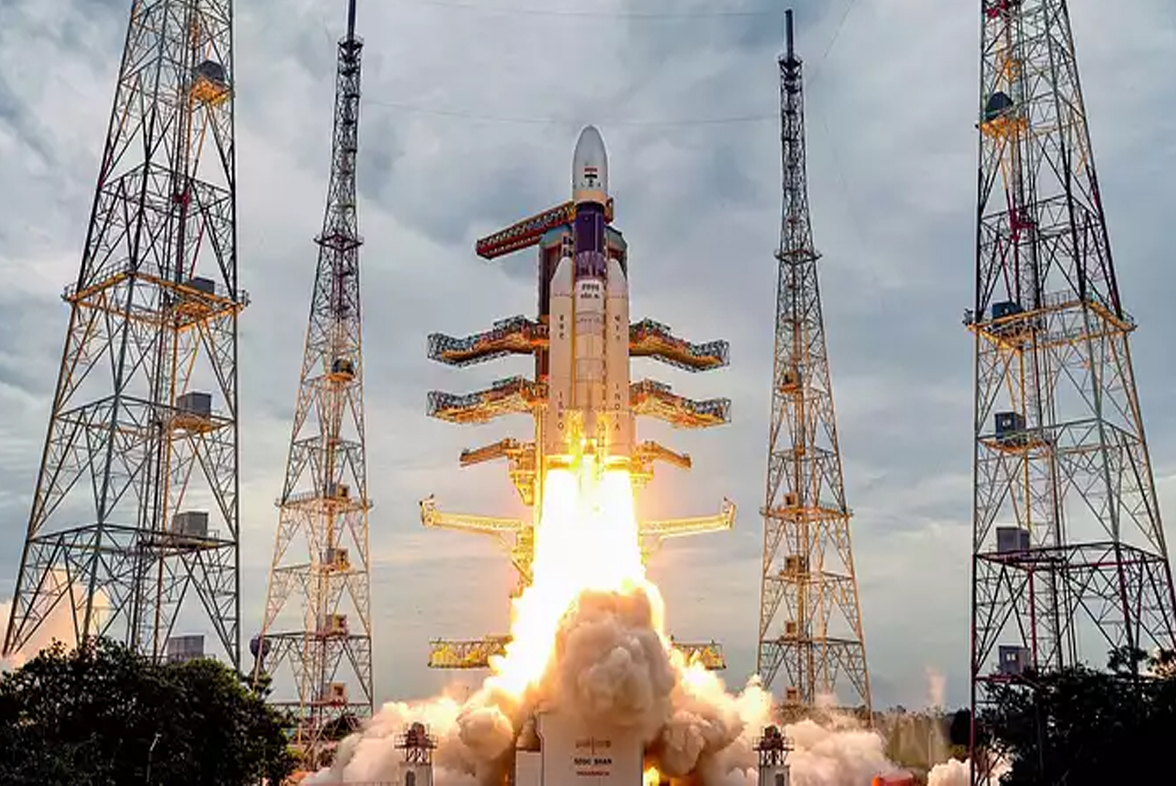NASA will launch twin satellites to study from space

[Edited By: Gaurav]
Tuesday, 11th June , 2019 06:50 pmNASA is ready to launch a pair of mini satellites that will study how military and air communications, as well as GPS signals, are distorted when they pass through the Earth's upper atmosphere. The launch of the Space Testing Program 2 of the US Department of Defense. UU., Along with a total of 24 satellites, is scheduled for the launch of the Space Testing Program of the US Department of Defense. UU The E-TBEx CubeSats focuses on how radio signals can be distorted by structured bubbles in this region, called the ionosphere. Especially problematic at the equator, these distortions can interfere with military and airline communications, as well as with GPS signals.
The more we can learn about how these bubbles evolve, the more we can mitigate those problems, but at this time, scientists can not predict when these bubbles will form or how they will change over time. "These bubbles are hard to study from the ground," said Rick Doe, manager of the payload program for the E-TBEx mission. "If you see that the bubbles start to form, then they move. "We are studying the evolution of these characteristics before they begin to distort the radio waves that pass through the ionosphere to better understand the underlying physics," said Doe.
The ionosphere is the part of the upper atmosphere of the Earth where the particles ionize, which means that they separate into a sea of ??positive and negative particles, called plasma. The plasma of the ionosphere is mixed with neutral gases, like the air we breathe, the upper atmosphere of the Earth and the bubbles that form there respond to a complicated mixture of factors.
Since its particles have electrical charge, the plasma in this region responds to electric and magnetic fields. This makes the ionosphere respond to space weather: conditions in space, including changing electric and magnetic fields, often influenced by the Sun's activity. Scientists also think that pressure waves released by large storm systems can propagate into the upper atmosphere, creating winds that shape the way the bubbles move and change. This means that the ionosphere and bubbles are formed by terrestrial climate and space weather alike.
The E-TBEx CubeSats send radio beacon signals at three frequencies, close to those used by communication satellites and GPS, to receiving stations on the ground, where scientists can detect minimal changes in the phase or amplitude of the signals. These interruptions can be mapped back to the region of the ionosphere through which they passed, giving scientists information on how these bubbles form and evolve. "All the signals are created at the same time, with the same phase, so you can see how they distort as they pass through the bubbles," Doe said. "Then, by looking at the distortions, you can override the information about the amount of roughness and the density of the bubbles," he said. The data produced by the twin CubeSats are complemented by similar beacons aboard the six NOAA COSMIC-2 satellites.
Like the E-TBEx CubeSats, the COSMIC-2 beacons send signals at three frequencies, slightly different from those used by E-TBEx, to receiving stations on the ground. The combination of measurements from the eight satellites will give scientists the possibility to study some of these bubbles from multiple angles at the same time.
Latest News
-
2-Doxy-D is a game-changer drug - discovered by sc
-
UP Covid News: Recovery rate rises 86 percent in U
-
Big B orders 50 oxygen concentrators from Poland,
-
Today is Akshay tritiya-PM Modi and Akhilesh yadav
-
Kanpur health department doing preparations to fig
-
UP Govt. must be held accountable for "failing" it
-
16 doctors in Unnao UP resign yesterday but retrac
-
Vaccine is safety cycle against corona pandemic-CM
-
Life of every person is priceless,rescue is the be
-
Kanpur Municipal Corporation will make dust free K
-
Corona vaccination: UP government withdraws the de
-
UP Government should follow the orders of Highcour
-
Uttar Pradesh-IG roaming in the city without the u
-
PM, take off those pink goggles, by which nothing
-
Rahul Gandhi's counterattack on BJP Government’s s
-
Happy international nurse day-PM Modi, Rahul Gandh
-
Online food delivery and liquor shops can open the
-
Egoistic BJP should work in public interest instea
-
High court directed UP Government to make a Covid
-
Isolation rooms to be built in industrial units, a
-
WHO has appreciated the effort of the Yogi Adityan
-
Brother is forced to carry his corona afflicted br
-
Lucknow- Free auto service for covid patients
-
Lucknow-Defense Minister and CM Yogi inaugurated
-
Wine shops opened in kanpur
-
Kanpur: oxygen demand 50 percent decrease as infec
-
Kanpur Crime Branch Police arrested 2 accused of i
-
Kanpur police's initiative to prevent corona infec
-
CM Yogi inspected the community health center in c
-
Corona's third wave: IIT professor claims not to c
World News
-
American president Appoints Two More Indian To Key
-
Arora Akanksha an Indian running for United Nation
-
Brazil thankes india with hanuman after receiving
-
Toronto protest against Indian citizenship law as
-
One-Of-A-Kind Wedding: After Groom's Father Gets A
-
Kim's Horse Ride On Sacred Mountain Hints At "Grea
-
Chinese President’s India visit on track, confirms
-
'Howdy Modi' event 'win-win' situation for Modi an
-
Malala urges U.N. to help Kashmiri children go bac
-
Rocket blast at U.S. Embassy in Kabul on 9/11 anni
-
PM Modi launches $4.2 mn redevelopment project of
-
Pakistan Blacklisted by FATF's: After Failing to A
-
Amazon Rainforest burning: Brazil President tells
-
10 shoking pics of Amazon Rainforest Burning
-
200 pakistan twitter accounts suspended on kashmir
-
Trump dials Imran Khan, asks to ‘moderate rhetoric
-
No policy change on Kashmir, says U.S.
-
Hamza, the son of Osama bin Laden, is dead
-
Ethiopians planted more than 200 million trees in
-
Pakistani military aircraft crash: All 5 crew memb







.jpg)


.jpg)






















